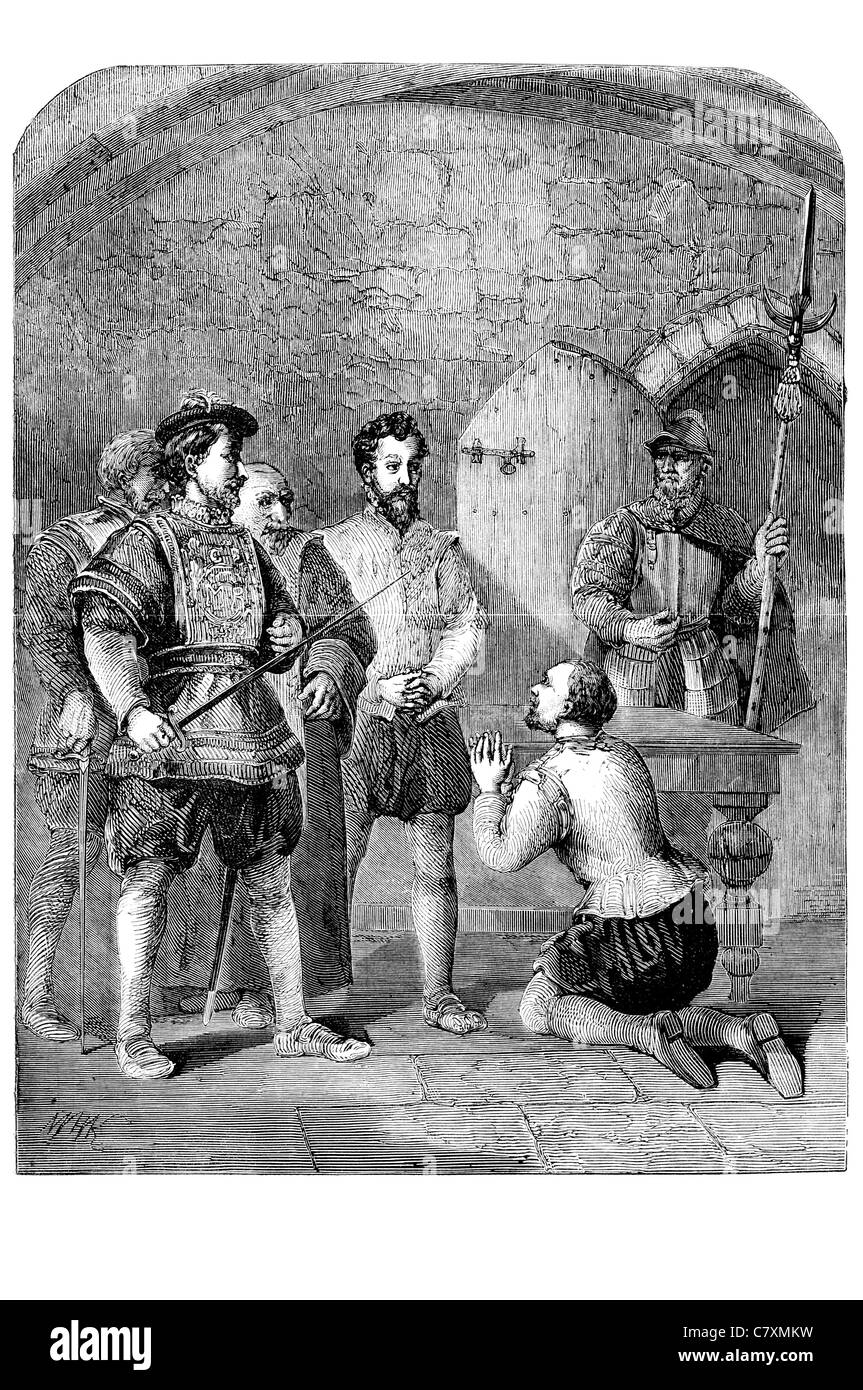Wyatt way to execution solemnly exonerating the princess Sir Thomas Wyatt younger 1554 rebel leader Wyatt's rebellion

Image details
Contributor:
SOTK2011 / Alamy Stock PhotoImage ID:
C7XMKWFile size:
38.5 MB (4 MB Compressed download)Releases:
Model - no | Property - noDo I need a release?Dimensions:
2990 x 4502 px | 25.3 x 38.1 cm | 10 x 15 inches | 300dpiDate taken:
1554More information:
Sir Thomas Wyatt the younger (1521 – 11 April 1554) was a rebel leader during the reign of Queen Mary I of England; his rising is traditionally called "Wyatt's rebellion". Returning to Allington, he lived quietly (serving as High Sheriff of Kent for 1549) until the death of Edward VI in 1553, when he joined the Duke of Northumberland's abortive attempt to put Lady Jane Grey on the throne in place of Mary I. Wyatt escaped punishment by Queen Mary. He took no further part in politics until Mary's betrothal to Philip of Spain. In 1554 he joined a conspiracy to prevent the marriage. A general movement was planned; but his fellow-conspirators were timid and inept. The rising was serious only in Kent, and Wyatt became a formidable rebel mostly by accident. Wyatt proclaimed his rebellion on 26 January in Rochester. Many of the country folk responded. The royal forces sent against him deserted or joined him, including part of the London trainbands under the Duke of Norfolk (his godfather). With 4, 000 men Wyatt marched on London, but was turned back at London Bridge and Ludgate. His men deserted and he surrendered. He was brought to trial on 15 March, and could make no defence. Execution was for a time delayed, no doubt in the hope that in order to save his life he would say enough to compromise the queen's sister Elizabeth, afterwards Queen Elizabeth, in whose interests the rising was supposed to have been made. But he would not confess enough to render her liable to a trial for treason. It was only through Elizabeth's dignity and composure that she managed to escape from the scandal unharmed, although she was spied upon and placed under house arrest for the rest of her sister's reign. He was executed on 11 April, and on the scaffold expressly cleared the princess of all complicity in the rising. After he was beheaded, his body was quartered.